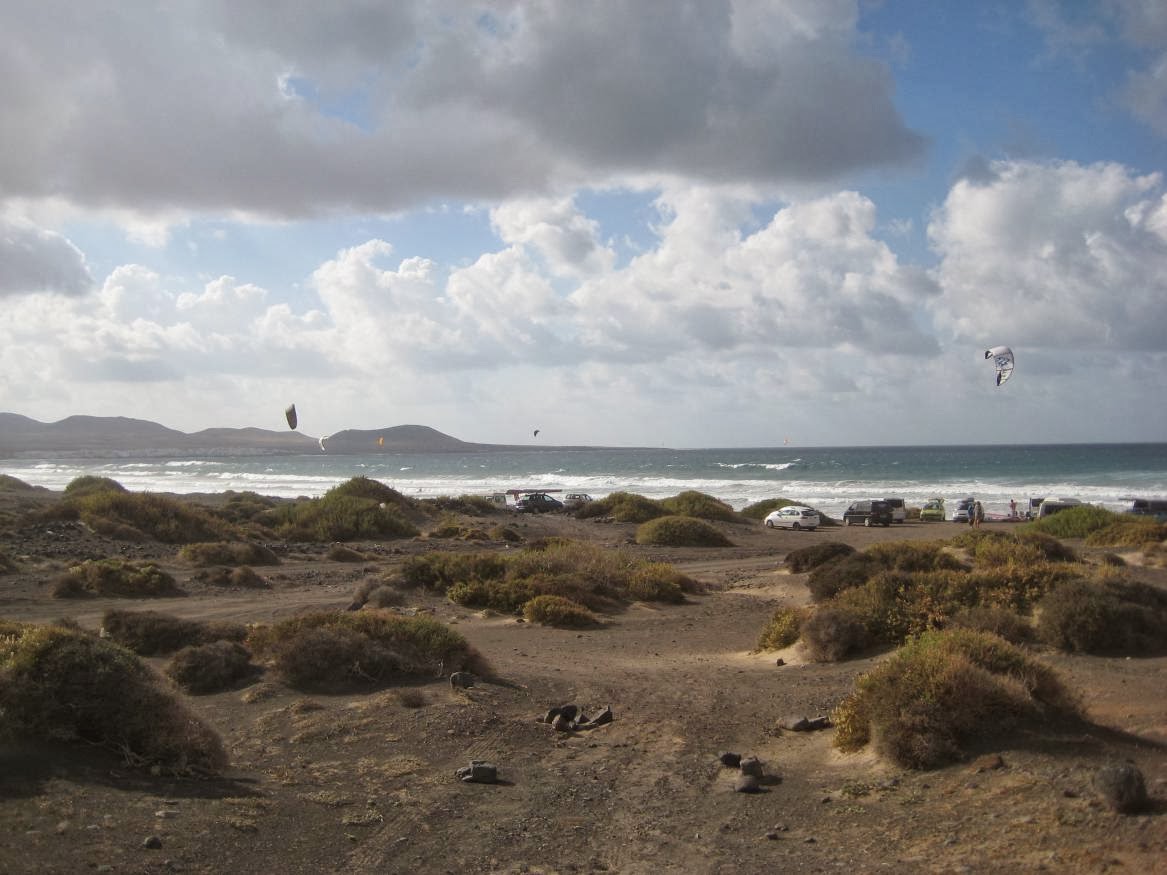Just north of Montaña Negra and Caldera Colorada, between La Geria and Timanfaya, is Montaña Ortiz, which at 453 metres, rises about 100 metres above the surrounding lava fields. The mountain, like many others, was formed by multiple eruptions, each bringing different rocks to the surface. In consequence, the rim of the crater is rocky, grey outcrops, with a belt of bright red rock, obviously rich in iron oxide. Further down, the middle part of the slopes is the usual mixture of clay and rocks which give way underfoot, making climbing treacherous, and the bottom belt is deep picon - easy to "surf" down, but very wearing to climb up! Over the picon is scattered a dusting of bright red pebbles and rocks. Some of the layers of rock are clearly permeable, whilst others are impermeable, and one of the latter layers comes to the surface at the base of the southern flank of the mountain, where, at the bottom of a picon slope is a well, surrounded by a stone wall. Around the base are deep deposits of picon, and there are plentiful signs of abandoned farming around here, made possible by the well in what would otherwise be an an arid landscape. Several huge old fig trees are enclosed by sheltering walls, now untended since the tourist industry became more lucrative than hard work in the blazing sun.
We walked around Caldera Colorada which has an amazing bright red aspect, along a well made path,which has several new, informative display boards, explaining the features of the landscape.
One of these is a volcanic "bomb" a huge boulder blown out during an eruption, going miles into the air before landing with a colossal noise - you can see the scale from the photograph.
 |
| Caldera Colorada and Volcanic "Bomb" |
|
We intended to climb Colorada that day, but by the time we had walked most of the way around looking for the best ascent, we saw Ortiz, and got diverted into going around that! We approached via a grove of giant Agaves - the spiky plants that throw up a huge (5 metre) flower stalk, and then die - and the fig plantations, to the well.
 |
| Giant Agave - Caminante on skyline! |
 |
| Figs, picon, and well (between red and black lava) | | | |
|
|
|
 |
| Well |
We then walked around until we found a slope which had some vegetation giving a foothold in the picon, taking us up onto a ridge. From there, we clambered up the muddy, stoney slope, taking great care not to slip.
 |
| Muddy slope, and lower ridge |
We were surrounded by dozens of tiny butterflies - blue female and grey male, chasing each other in a mating dance. Finally, we popped, with some relief, onto the rocky summit ridge, and scrambled up to the very top where there is a large concrete trig point.
 |
| The summit |
It amazes me how they get them there - there was no possibility of getting a vehicle up there ,and no obvious paths for a goat, let alone a donkey or camel. We were amused by the relatively large lizard, who came to see what food we had, and happily clambered over our feet.
 |
| Lizard looking for food |
We found a slightly less steep slope down onto another ridge - going down a slippery slope is much worse than going up - and from there we had a 30 metre rapid descent down a picon slope, and repaired to a local watering hole for a well deserved beer.


















